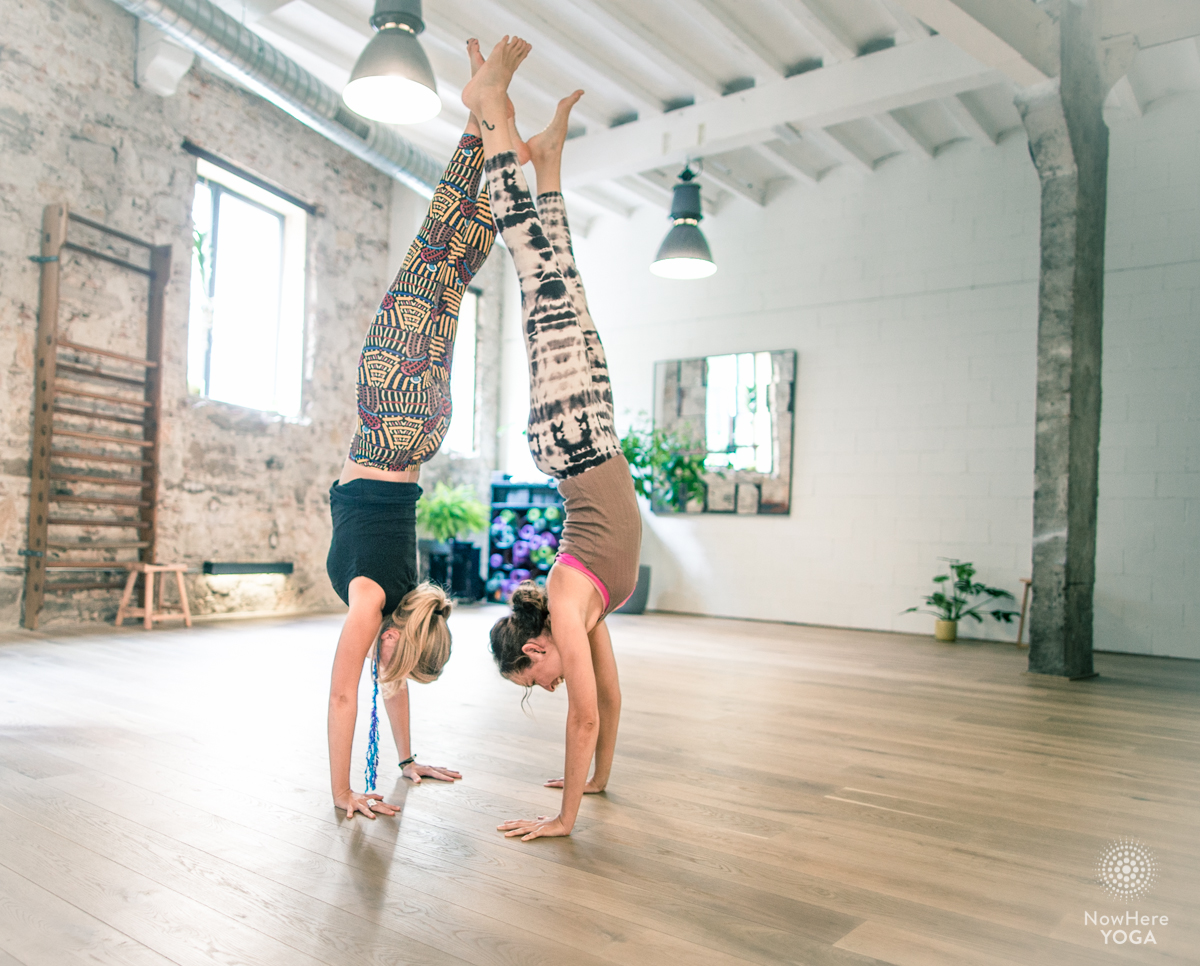There are many times in yoga that you might find yourself upside-down. Whether it’s a forward fold, a handstand, head stand, or even downward dog, they all different ways of doing what’s called an inversion.
A yoga inversion is basically any variation of a pose in which your upper body is either completely upside down or about 45 degrees upside down (like in downward dog). There are many things we all experience when doing inversions. It might feel like all the blood in your body has rushed to your head, or like all your senses have been cleaned upon standing upright again. Sometimes you’ll notice it helps to regulate your pace and your breath–if you come up too fast, there’s a good chance you’ll feel light-headed! However you experience them, they usually become more and more enjoyable the more familiar you become with upside-down-ness.
But why do we do them in yoga? What are the benefits?
- Breaking old habits and changing perspective. Do you have a habit of standing on your feet? Well, of course! We all do. But when we do something contrary to what we’re used to, it helps us to see and understand something from another perspective. You know that, even in downward dog, you’re using so many muscles of the hands to help hold you up. Since our feet are so used to supporting us as we walk and stand, we don’t realise all the minute details of what’s going on down there. When we use our hands to bear our weight, our hands get to experience a little bit of what the feet experience. It breaks us of our habitual point of balance and allows us to explore new perspectives.
- Improves circulation and heart health. The heart works as a pump to release oxygenated blood to the body and bring back de-oxygenated blood in order to be recycled. But the heart is constantly working against gravity. When we go upside down, the blood rushes towards the heart, to the upper body, rejuvenating circulation and giving the heart a break. [Note: Anyone with high or low blood pressure should mention this to their instructor before doing long inversion practices. Yoga can help to regulate blood pressure over time, but care should be taken if there is a current sensitivity.]
- Increases immunity. Our immune system is mostly regulated through the lymphatic system and central thymus gland. There can be up to 700 lymph nodes scattered throughout the body which help to scout for and rid the body of harmful bacteria and other pathogens. The lymph travels through the body where it is recycled through the thymus gland, the main lymphatic gland that sits in the centre of the chest. The lymph moves by small muscle contractions and is also influenced by gravity. Similar to the circulatory system, when we go upside down, this changes the pull of gravity and helps to refresh the system.
- Strengthens the core. Because we are learning how to balance in a different way, we use different muscles. Many of these muscles are located in the core. We can’t just rely on our arms, hands and shoulders to hold us up when we invert–we need that fire of our solar plexus to help keep us balanced and strong!
- They build confidence and humility. Inversions require a balance of these two key components. Going upside down gives us the confidence to try something new and to trust ourselves as we explore what our bodies can do. But we need the humility to know that it’s all just fun and curiosity. We need to know that, even after years of yoga practice, we can laugh and have fun if we happen to fall out of a pose. And to know that, trying something new for the first time–maybe even trying a familiar pose in a new way–we can be both confident and humble at the same time.
Enjoy all the different perspectives that you can explore in your yoga class. Have fun, be safe, and enjoy!
Photo Credit: NowHere.yoga



